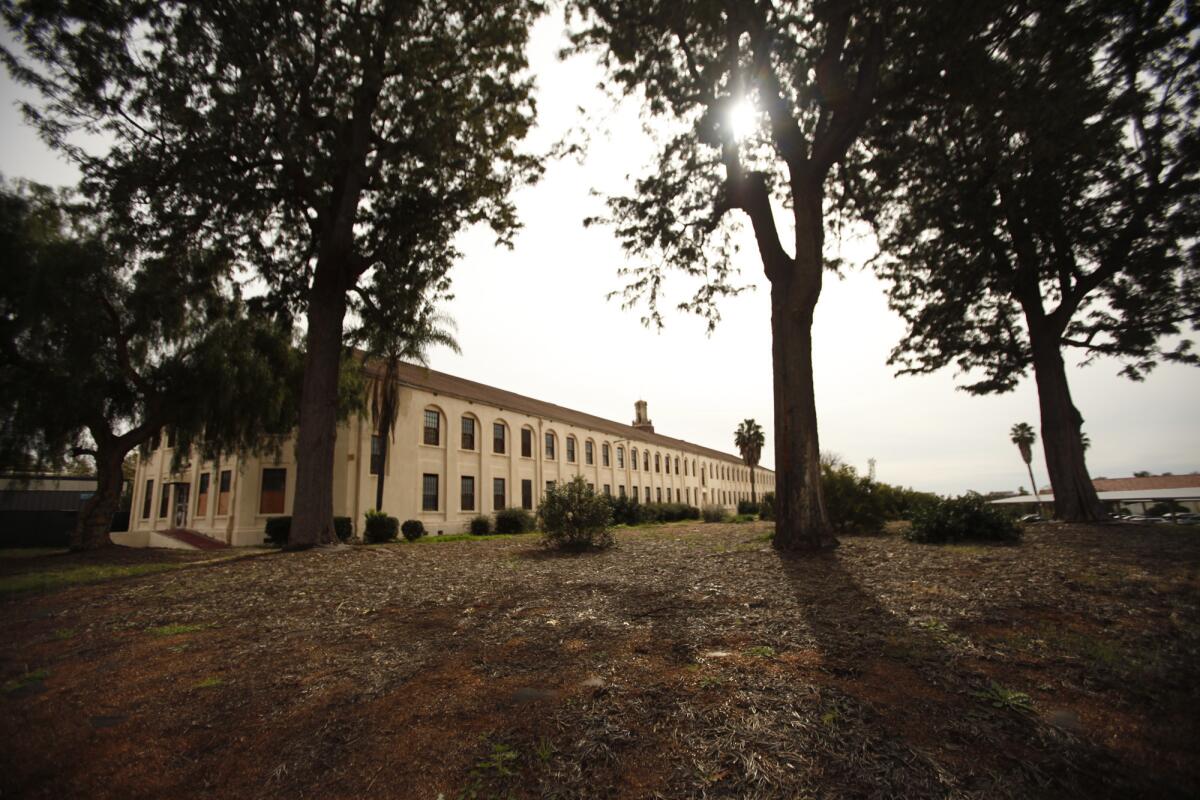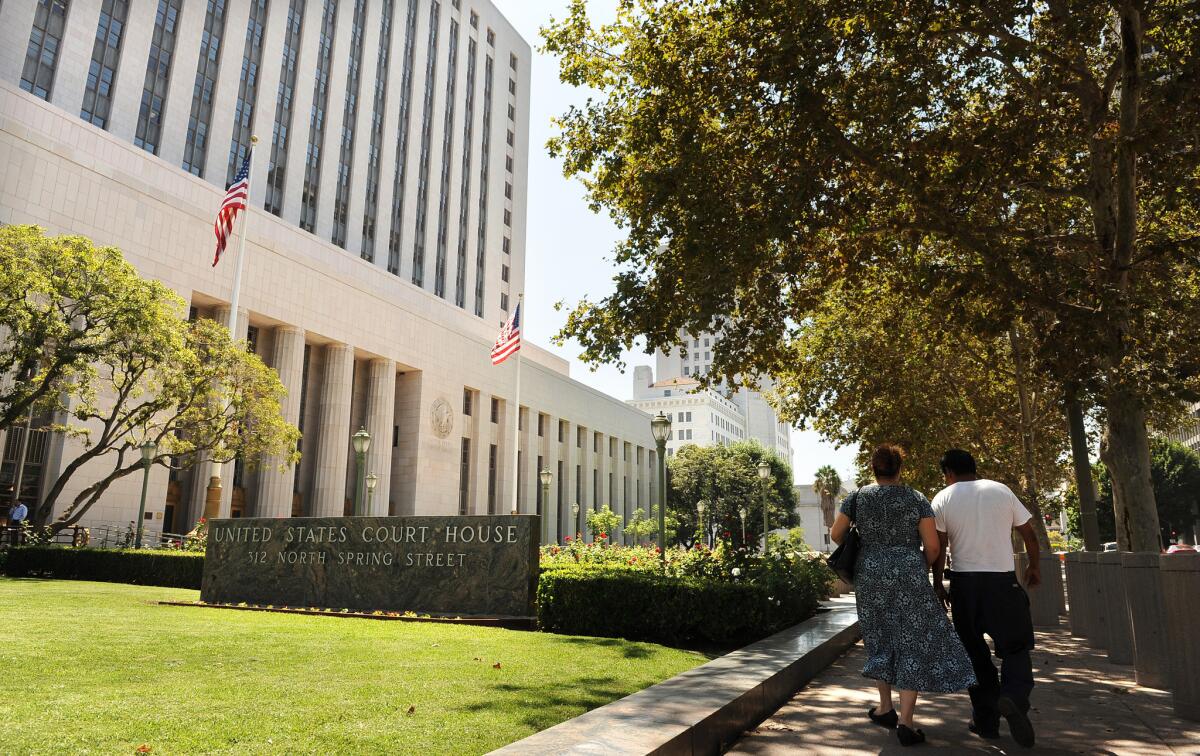The government spends $1.7 billion a year on 770,000 empty buildings, and one Central Valley congressman is fed up

The Veterans Affairs Facility in Los Angeles is one of the underused sites.
- Share via
Reporting from Washington — The federal government spends more than $1.7 billion a year to maintain 770,000 empty buildings while other agencies are leasing or buying new space, and Rep. Jeff Denham is fed up.
“This is something that hasn’t been handled in Republican or Democrat administrations because it’s too big of a bureaucracy,” Denham (R-Turlock) said in an interview in his office. “There’s no incentive for the agencies to sell.”
He said if politicians are going to talk about cutting government waste, selling empty buildings is a good start.
Denham has tried repeatedly to create a federal panel to streamline the sale of federal property. On Tuesday, the House Transportation and Infrastructure Committee unanimously approved Denham’s most recent effort. A similar Senate bill sponsored by Sen. Ron Johnson (R-Wis.) was approved by the Senate Homeland Security and Governmental Affairs Committee in December.
The seven-member commission created by Denham’s bill would have six years to review most federal property, recommend buildings to sell and suggest ways agencies could consolidate space. The White House Office of Management and Budget would review the recommendations and report to Congress on which properties to sell and why.
“We have very little communication between agencies,” Denham said. “We’ve seen agencies that will put out to bid huge pieces of property for the next big expansion, the next new thing that they need and only after it gets approved, then another agency goes ‘Hey, wait a minute, we’ve got half of a building here.’”

The Los Angeles Federal Courthouse is cited as one of the underused buildings.
The commission also would recommend at least five “high value” properties not listed as surplus property for sale with a combined value of at least $500 million.
The House Oversight and Government Reform Committee will review the bill before it can move to the House floor.
The federal government has tried for decades to get a handle on its hundreds of thousands of office buildings, storage warehouses, courthouses, hospitals, parking garages and other structures. In California, the federal government owned more than 271 million square feet of property in fiscal 2014, according to the General Services Administration. How much of that property is not being used is not clear.
President Bush created the Federal Real Property Council and a comprehensive property database in 2004. Beyond an annual report, the General Services Administration-maintained database is not available to the public, Congress or other federal agencies.

Rep. Jeff Denham (R-Turlock), right, shown in 2013, is pushing to sell empty federal buildings across the country.
Under President Obama, the Office of Management and Budget has instructed agencies not to increase their total square footage of office and warehouse space beyond what existed in 2012.
Despite those efforts, the Government Accountability Office reported in June that the government continues to hold more property than it needs, leases when it would be cheaper to own and uses unreliable data to make property management decisions.
Denham’s bill would require the administration’s database to be public and include details about each property’s specific location, maintenance costs and use, and why the property is needed.
He pointed to the Los Angeles Federal Courthouse and the Veterans Affairs Facility in Los Angeles as examples of underused buildings. “They need to have a long-term plan of what those vacancies are going to be used for and whether or not they can combine [with] other agencies,” Denham said.
Similar legislation from Denham passed the House in 2012, but died in committee in 2013.
Denham’s earlier attempts were stymied by concerns that they would interfere with an existing requirement that before surplus federal property can be sold, regardless of type or condition, it must be offered to states, municipalities and nonprofit groups that provide services for homeless people.
A 2016 Congressional Research Service report found that could add months or years to the process.
“That was certainly a stumbling block that we had dealt with two years ago in the last Congress,” Denham said. “The way that GSA had defined this in the past, [a] homeless advocacy group could actually put a hold on any property that we were trying to sell. That created a disincentive for agencies actually trying to sell.”
Since 1987, only 122 of 40,000 screened federal properties have been transferred to homeless advocacy groups under this process, according to a June 2015 report from the U.S. Government Accountability Office.
Denham said surplus federal properties should be available to house the homeless, but the process should be easier.
Under his bill, the Department of Housing and Urban Development would decide which federal properties might be suitable and only those buildings would be offered to nonprofits, municipalities or states. It also shortens the screening and application process.
“When you’ve got a billion-dollar property, when you’ve got a heating plant in Georgetown, those are not properties that are going to be used for the homeless,” Denham said.
Several lawmakers who previously opposed the measure over concerns that it would affect homeless advocacy groups’ access to surplus property have signed on as co-sponsors, including Rep. Elijah Cummings (D-Md.), the ranking Democrat on the Oversight and Government Reform Committee.
The highest-ranking Democrat on the Transportation Committee, Rep. Peter DeFazio (D-Ore.), said he and Denham spent “considerable time” negotiating details of the bill and he is “quite happy” with the final result.
See more of our top stories on Facebook >>
The Obama administration hasn’t taken an official stance on the bill, and opposed it in the past, but Rep. Andre Carson (D-Ind.), told committee members Wednesday that Denham’s bill lines up with the president’s efforts to reduce federal property.
Denham said the challenge at this point is getting the bill passed during a presidential election.
“We have, I think, set this bill up for success, but I think, like anything else, this is a challenging year and a challenging political climate. We still have to get it off the floor and marry it to the Senate and ask the president to sign it,” he said.
Follow @sarahdwire on Twitter.
Read more about the 55 members of California’s delegation at latimes.com/politics.
ALSO
Trump’s first congressional endorsement comes from California: Which candidates have support?
Why a congresswoman from Los Angeles is talking about Africa
Feinstein water policy bill could signal a compromise in sight
More to Read
Get the L.A. Times Politics newsletter
Deeply reported insights into legislation, politics and policy from Sacramento, Washington and beyond. In your inbox three times per week.
You may occasionally receive promotional content from the Los Angeles Times.










